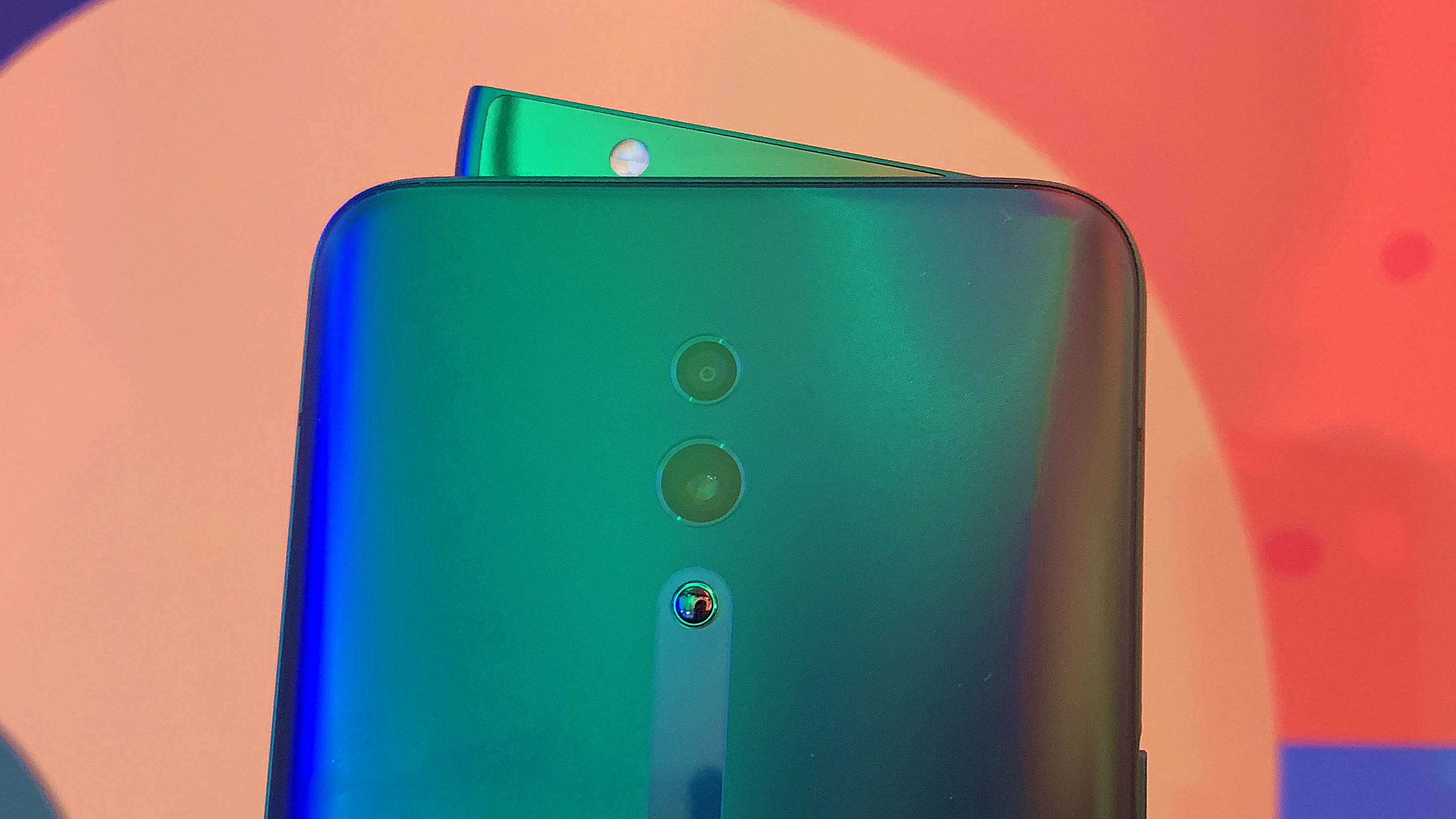Early Verdict
After teasing us with the 10x zoom demo at Mobile World Congress, Oppo has decided to ship this impressive camera technology in a flagship phone. Huawei may have beaten them to market, but the Oppo Reno boasts the same brilliant 10x lossless hybrid zoom that promises to revolutionise your holiday snaps and gig photography.
Pros
- +
Impressive 10x Hybrid Zoom
- +
No Camera Bump
- +
Expansive 6.6-inch OLED
Cons
- -
Not convinced by the Pop-Up Selfie Camera
- -
Doesn't match the P30 Pro's 50x zoom
Why you can trust Digital Camera World
Oppo has just taken the wraps off a trio of flagship smartphones: but it's the Oppo Oppo Reno 10x Zoom that we are interested in, and we have been tracking this particular camera phone for months now.
As the imaginative name suggests, the Oppo Reno 10x Zoom boasts the Chinese manufacturer’s all-singing, all-dancing 10x lossless hybrid zoom set-up, which it demoed at MWC earlier this year.
Unlike the ill-fated 5x optical zoom technology previously showcased by the company, the 10x zoom system will make it to market in the Reno 10x Zoom and the Reno 5G.
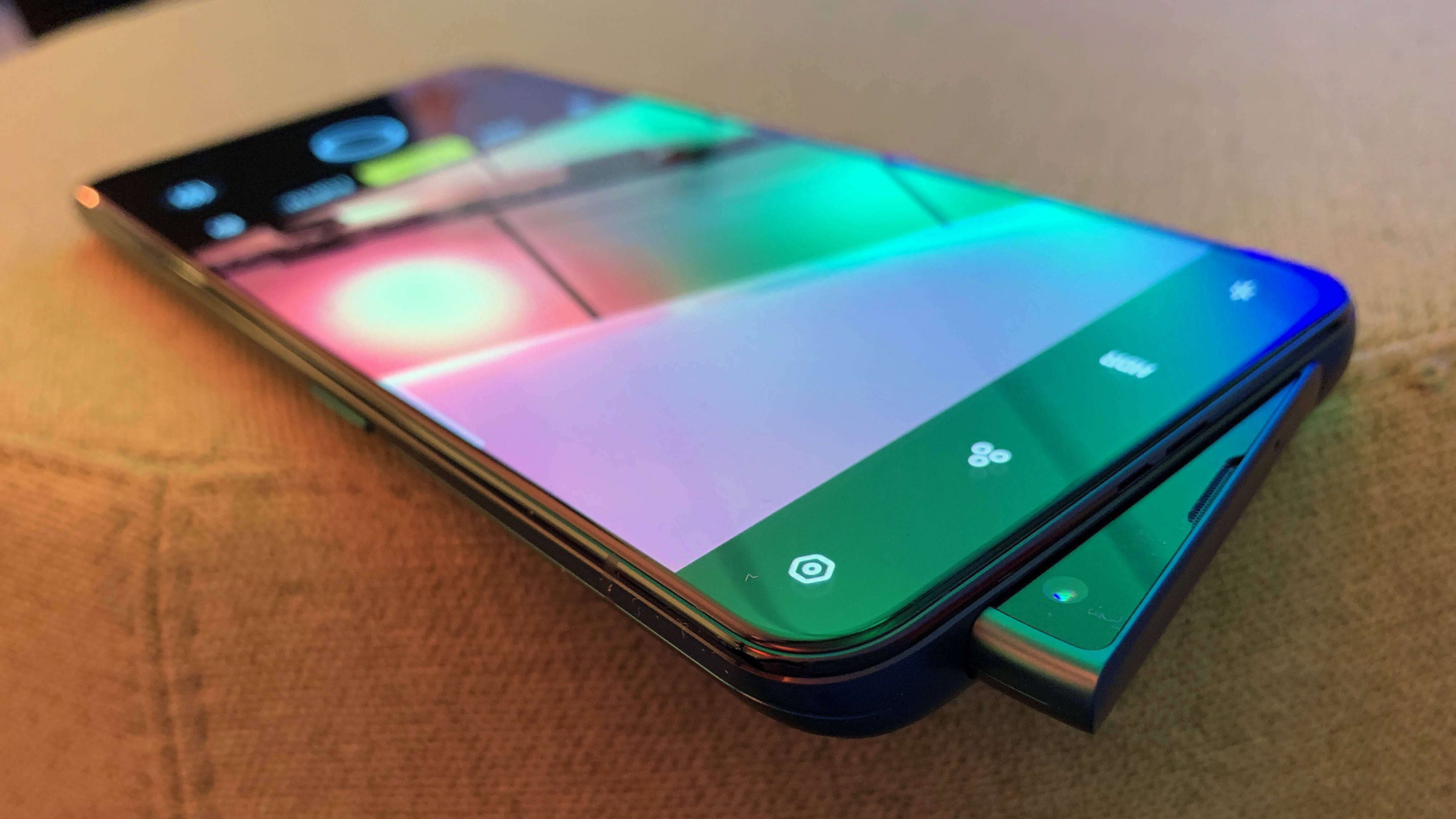
Digital Camera World was at the Oppo Reno announcement event in Zurich today and spent some time with the flagship smartphone and its paparazzi-like zoom functionality. So, can the Oppo stand toe-to-toe with the Huawei P30 Pro, which boasts the same 10x lossless zoom and take the best camera phone crown?
Oppo Reno 10x Zoom: Design and Features
Oppo has fitted its flagship Reno handsets with a triple-camera set-up comprising a 48MP main camera, coupled with an 8MP ultra-wide angle camera and 13MP telephoto lens.
Exact specs are as follows: Wide lens: 48MP, 1/2.0-inch sensor, f/1.7 aperture (26mm equivalent focal length), OIS; Telephoto lens: Periscope 13MP, f/3.0 aperture, 130mm equivalent focal length, OIS; Ultra-wide lens: 8MP, f/2.2 aperture (16mm equivalent focal length), autofocus.
The front camera is a motorized pop-up 16MP, f/2.2 aperture (26mm equivalent focal length).
Oppo Reno 5G and Reno 10x Zoom boast the usual raft of camera features we’ve come to expect from a flagship smartphone, including portrait mode with artificial bokeh-style blur behind the subject, beauty filters, panorama, and ultra-wide angle photographs.
Oppo has also included 4K video capture at 60 frames-per-second. But let’s be honest: the headline feature on the Reno series is the zoom.
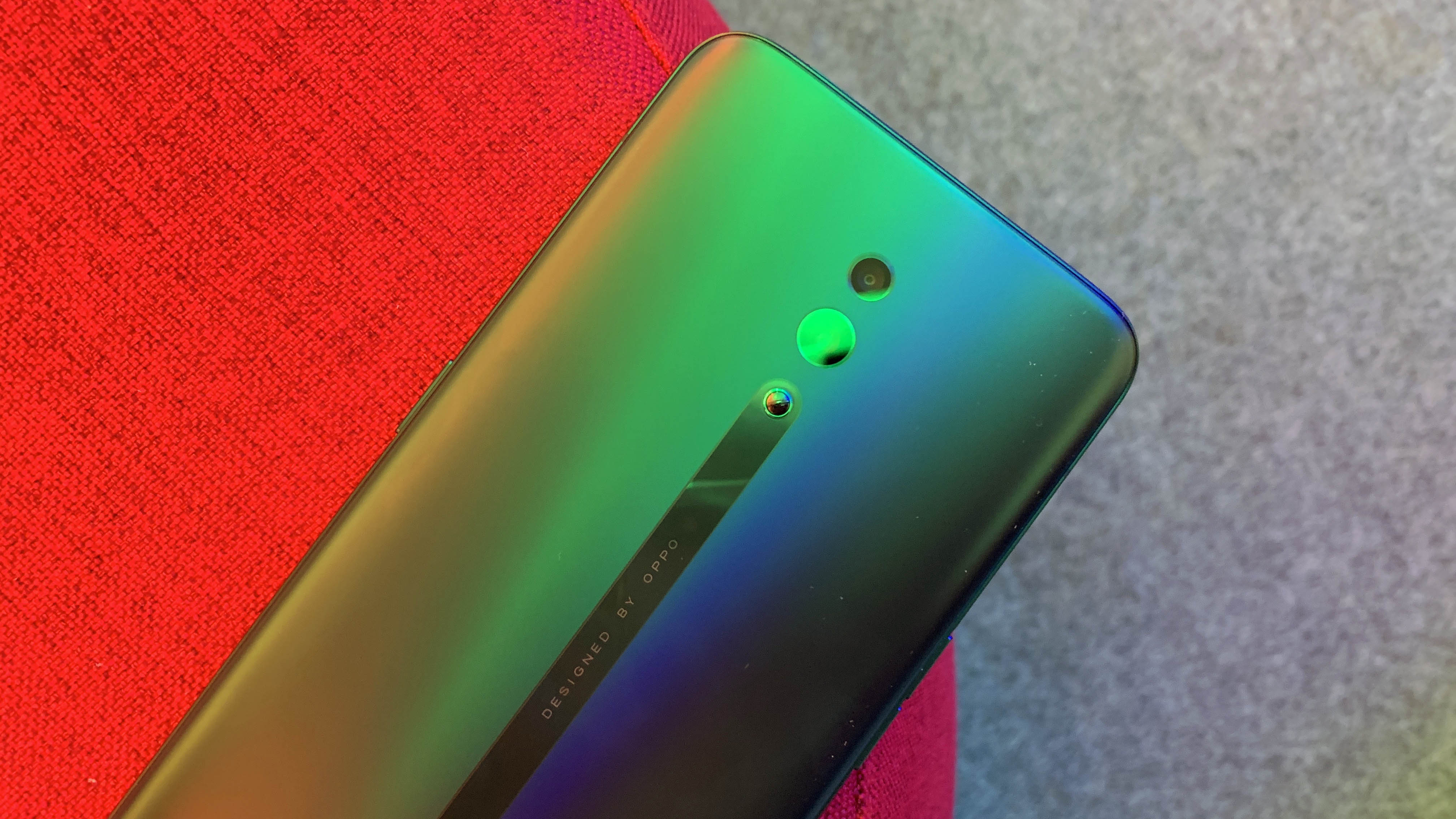
Like the demo camera set-up unveiled at MWC back in February, the Reno 5G and Reno 10x Zoom are capable of 10x lossless hybrid zoom.
Unlike the rival Huawei P30 Pro, which differentiates between its 5x lossless optical zoom and 10x lossless hybrid zoom – that uses AI to fill-in any gaps, Oppo is more opaque about exactly when it moves between optical and hybrid zoom.
According to Oppo, the Reno smartphones use all three cameras in tandem each time you hit the shutter in order to eke as much detail as possible from each shot.
The Dongguan-based company has fitted the triple-camera with dual Optical Image Stabilisation (OIS) to remove any blur caused by handshakes – crucial when dealing with this amount of zoom.
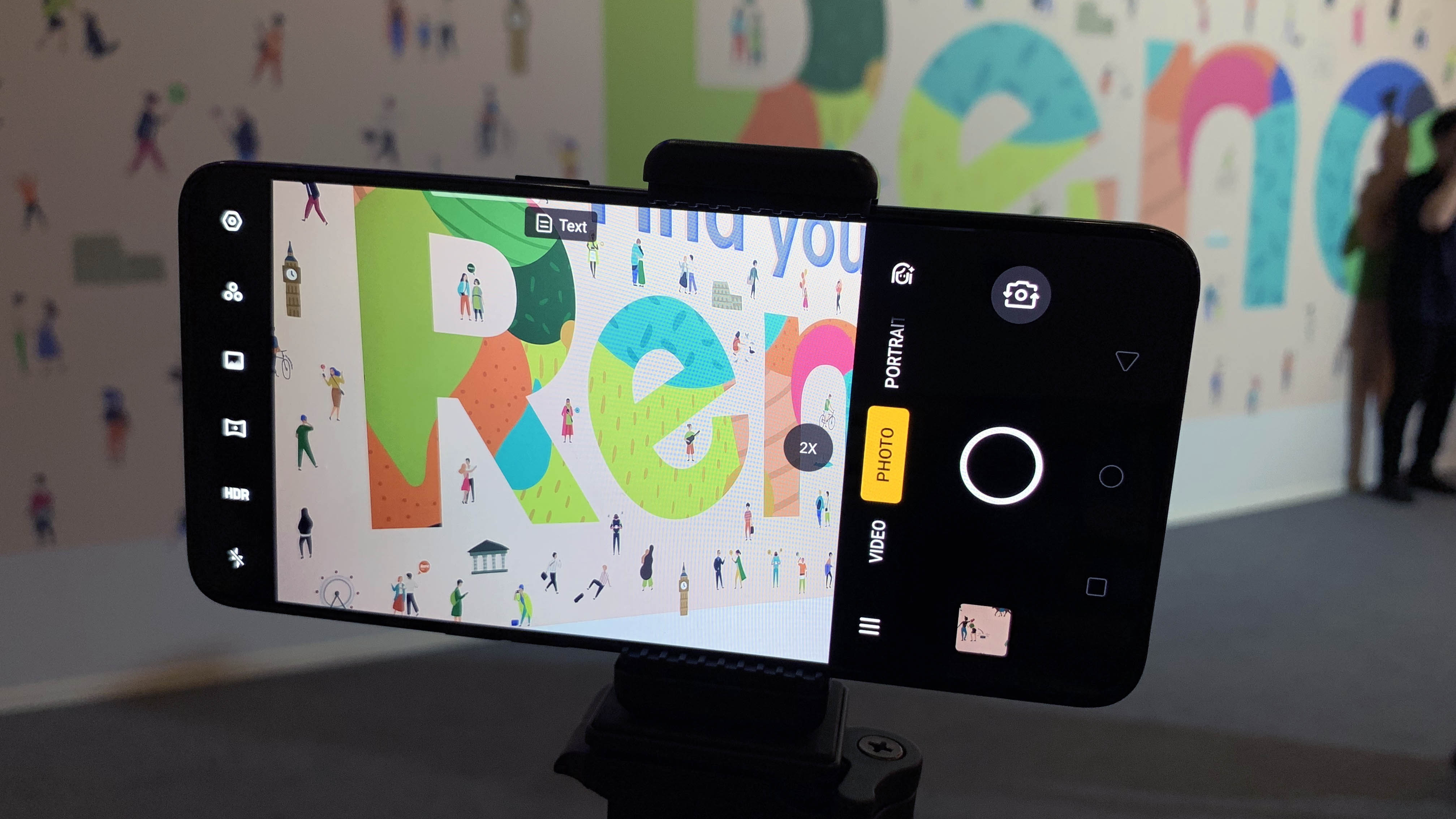
The zoom functionality is accessed from the viewfinder in the default camera app, which means you won’t have to dig through any labyrinthine menus to find a dedicated zoom mode.
In the lower-third of the the viewfinder, Oppo includes a shortcut to switch between 1x, 2x, 6x, 10x, and the ultra-wide angle lens. If you prefer more granular control over the zoom, Oppo lets you pinch anywhere in the viewfinder to cycle through the decimal points.
Oppo Reno 10x Zoom: performance
Switching between the levels of zoom by tapping on the shortcut is really fast. In our brief time with the Reno 10x Zoom, photographs look solid.
Like the Huawei P30 Pro, the hybrid system handles text better than anything else – the software sharpens letters with aplomb, making signs in the distance completely legible. We’ll need to spend more time with the Oppo Reno 5G to truly test the limitations of the new hybrid zoom.
However, in our brief time with handset 10x zoom images shot in lower-light conditions are mired with a hefty amount of grain. But in brighter conditions, everything looked crisp, bright and lives up to the lossless name.
As with the Huawei P30 Pro, the 10x hybrid feature feels truly transformative and lets you capture photos that you wouldn’t be able to achieve with any other handsets.
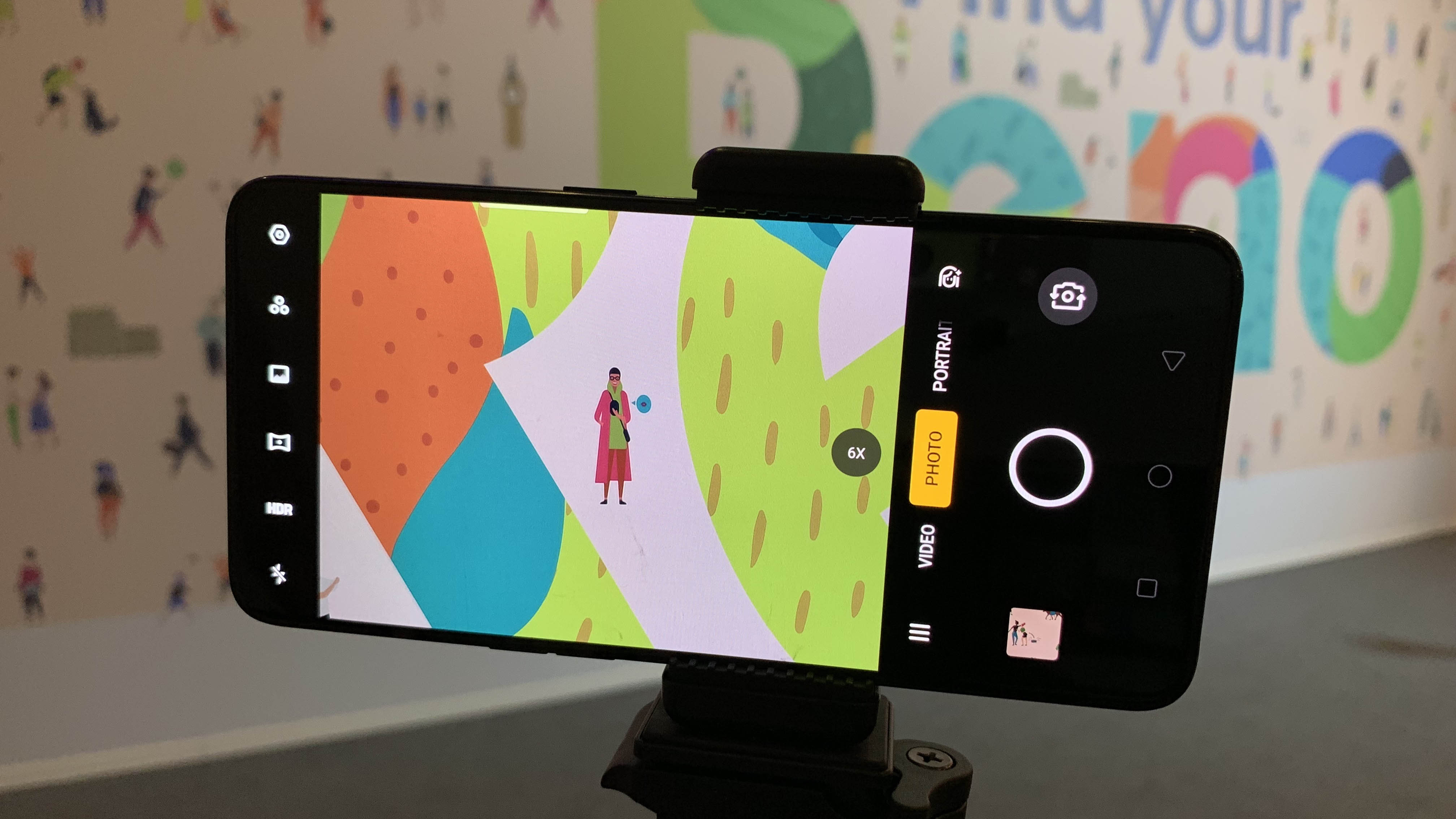
Aside from the zoom functionality, one of the biggest improvements to the Oppo Reno 5G and Reno 10x Zoom is Ultra Night Mode 2.0. This is similar to the dedicated Night Sight mode you’ll find on the Google Pixel 3.
Oppo says it’s leveraging AI, HDR, and multi-frame noise reduction to reduce noise in the tough, low-light conditions. According to the company, this combination will "enable users to achieve the level of brightness and details that normally exceed the limits of human eyes”.
In our tests, Ultra Night Mode 2.0 worked really well. Comparable with the Pixel 3, but maybe not quite as creepily impressive as the Huawei P30 Pro, which can illuminate even the darkest rooms.
Oppo has incorporated facial recognition into the feature to ensure the subject of your photo are prioritised when it comes to salvaging details from the shadows. Whenever you switch over to the night mode, the camera will automatically scour for faces.
The sample images we’ve seen from the Oppo Reno series shot using this feature look seriously impressive, but don’t they always? We’ll need to spend more time with the camera to really assess the feature.
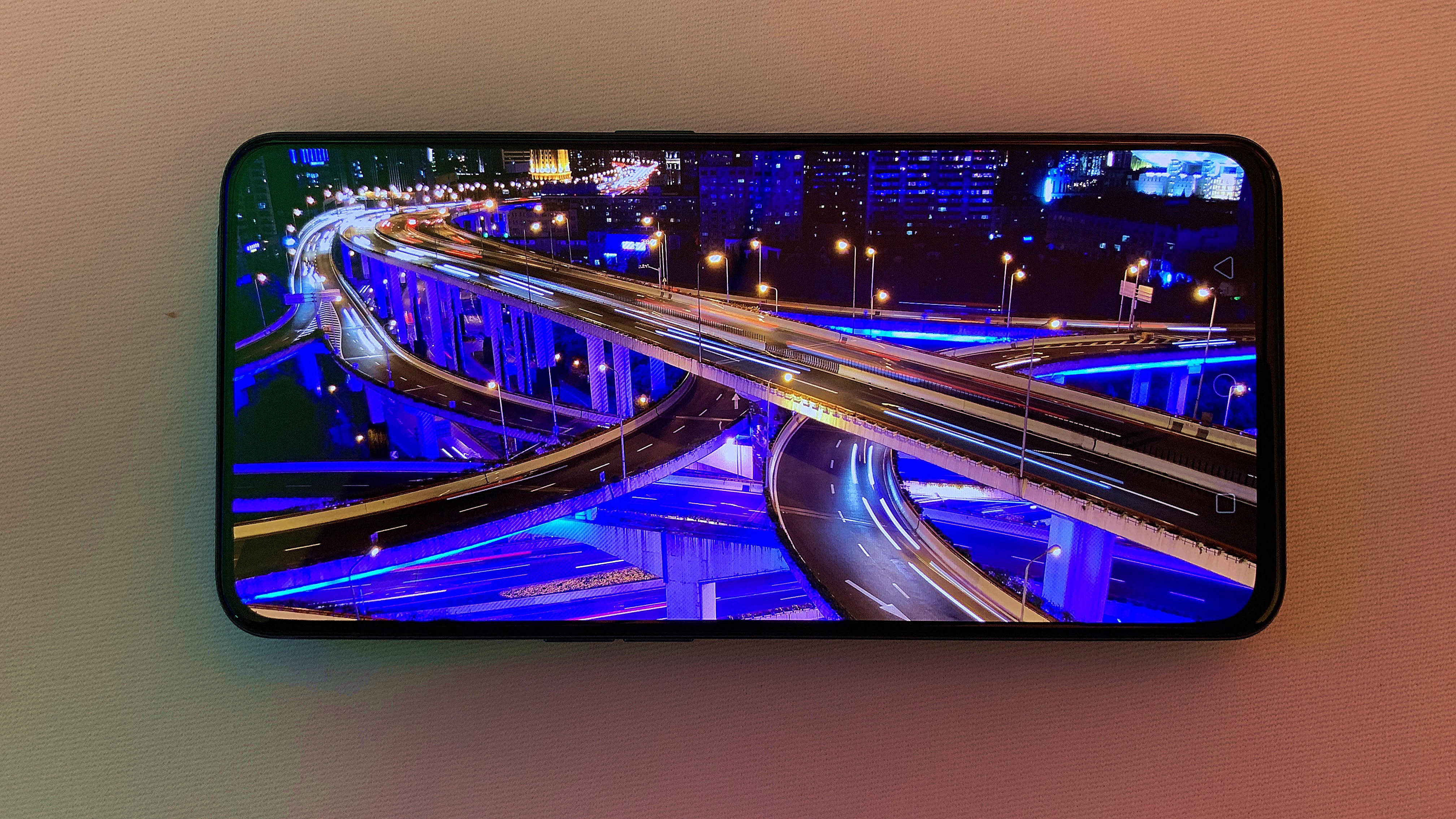
Aside from the 10x triple-camera, Oppo has all the trimmings of a modern Android flagship. It’s powered by the Qualcomm Snapdragon 855, coupled with 6GB or 8GB of RAM.
Gorilla Glass 6 protects the front and back of the handset, although there’s no wireless charging to be found. The front of the Reno is dominated by an edge-to-edge 6.6-inch OLED with no notch, or hole-punch. This all-screen design offers an impressive 93.1% screen-to-body ratio, which makes watching movies, playing games and reading eBooks and articles.
In order to achieve this all-screen design, Oppo has embedded the fingerprint scanner beneath the display and relegated the front-facing camera to a mechanised pop-up drawer that emerges from the top of the handset in 0.8 seconds. While that might sound pretty speedy on paper, when you're using the phone – it feels a little slow.

Oppo shows the viewfinder flipping around whenever you switch between the rear-mounted and front-facing cameras – an animation you’ll recognise from most modern smartphones. However, after the animation finishes playing, there is still a beat while you wait for the camera to fully protrude.
It’s a little irritating and will slow down your selfie taking compared to rival handsets. Whether that wait is worth the trade-off for the immersive 6.6-inch OLED will have to be your call. For those worried about the reliability of the mechanised drawer, Oppo says it’ll manage 200,000 openings and retractions without issue. That’s 100 selfies every day for five years.
Oppo has also kitted out the Reno with a safety mechanism that automatically retracts the pop-up as soon as it senses that it’s dropping to the floor. It’ll also retract the selfie camera when you put it in your pocket too.
Oppo Reno 10x Zoom: early verdict
We'll need more time to truly put the Reno through its paces, but for now, it seems like Oppo has created a genuine competitor to the Huawei P30 Pro, and a contender as the best camera phone.
The 10x hybrid zoom, low-light photography, and all-screen design are truly impressive. Whether you're willing to put-up with the drawbacks of the mechanised pop-up camera for that edge-to-edge display is another question.
